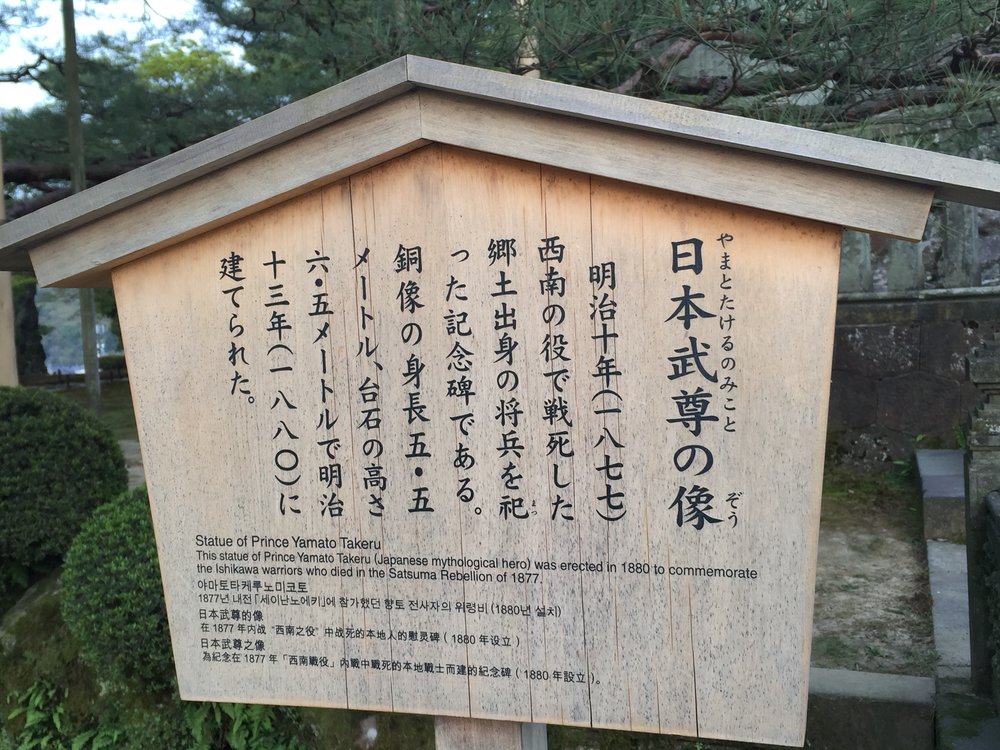You’ve heard of Tokyo. You’ve heard of Kyoto. And you’ve heard of them because everybody talks about them.
But what about a place in Japan that people aren’t talking about? What about little old Kanazawa?
Look, I mean no disrespect to the big, crowded, famous Japanese cities. They’re some of my favorite places in the world, and definitely worth a visit (or two. Or three. Or nine). But if you’re anything like me, sometimes you want to avoid the crowds and check out some of the country’s best kept secrets. And for me, Kanazawa is the top of that list!

A Step Back In Time
Why do I keep calling it “little old Kanazawa?”
Well, I mean that as a term of affection, but I also mean it quite literally. Kanazawa is little. Kanazawa is old.
My experience of Kanazawa was brief and rainy. Due to an unexpected stint in a Japanese hospital (a story for another time!), I only spent about two days in this charming town. The original plan was to be there for 3 days, which would have been ideal. But I’m not complaining (unless complaining earns me another few days there!). I wasn’t in tip-top physical shape for this visit, so the slower pace gave me a welcome break from the Kyoto and Tokyo hustle and bustle. Plus, the light rain added to the charm of the cobblestone streets dotted with ancient-looking lanterns.

If there’s any “main” attraction for this off-the-beaten-path city, it’s Kenrokuen.
Kenrokuen is classified as one of the Three Great Gardens Of Japan. Did you know that was even a thing? I didn’t. But now that I do, of course I want to visit them all!
So in a country that’s known for its dazzling assortment of beautiful gardens, what’s so special about Kenrokuen?
First, let’s dissect the name itself: The “roku” of “Kenrokuen” means “six.” Ancient Chinese literature states that a perfect garden contains six characteristics, or rather, three pairs of of complementary elements: spaciousness & seclusion, artifice & antiquity, and water courses & panoramic, sweeping views. Hit the right balance of these features, and you’ve got yourself some serious #gardengoals. And as the name suggests, Kenrokuen checks all six off the list.
If you’re less interested in ancient etymology than I am, that’s okay. Really, I’m used to it. You can still enjoy the feeling of balance that a stroll through this garden evokes.
Kenrokuen Famous Features
With so many beautiful garden paths to explore, make sure you don’t miss some of the key features that give this garden such a unique story!
Kotojitoro Lantern

This feature of the garden is so special, it’s become the symbol for the city of Kanazawa. Most Japanese lanterns are held up by three or four relatively squat legs. Kotoji-toro stands on two long, elegant legs, one resting on land, one in the water. Ready for some more fun etymology? This name derives from the “koto,” which is the national instrument of Japan (did you know Japan has a governmentally recognized national instrument?). This lantern is said to resemble the koto in its shape and elegance
The Oldest Fountain In Japan

This fountain, which operates by natural water pressure, was built in 1861. It is the oldest fountain in Japan. It’s fairly simple in its design, yet impressively functional for its age (I hope someone says the same thing about me one day). I’m not sure why, but seeing this fountain made me feel…a little bit starstruck? Something about visiting the first fountain in a country that’s now brimming with beautiful fountains made me go weak at the knees. Then again, I had spent the previous day in the hospital, so maybe that was a contributing factor.
The Pine Trees (Karasakimatsu and Neagarimatsu)


The fountain isn’t the only part of the garden that is magnificently old. Let’s look at the pine trees, many of which were planted by the 13th Lord Maeda hundreds of years ago. These trees need a bit of support (don’t we all), and even get covered with special structures in the winter to protect them from the snow (I have only seen them in the spring, but the winter protection is pretty famous).

A particularly noteworthy tree is Neagari Matsu, whose name means “pine tree with roots that go up.” The reason for this name is pretty obvious when you see the incredible height and strength of the exposed roots dramatically standing out of the ground.
Meiji Monument

And here you thought all of the “Meiji” stuff was at Meiji Jingu in Tokyo! Oh, Kanazawa, you always keep us on our toes!
This statue is not, however, of Emperor Meiji. Meet Yamato Takeru no Mikoto. Not much is known for certain about him, but he is considered the 12th Emperor of Japan. He is a legendary Japanese hero, something like King Arthur of Western culture.

Are you collecting a list of cool stuff Kanazawa built first? I know, who isn’t?? Well, here’s another: this was the first outdoor bronze statue built in Japan.
Hisagoike Pond

Having trouble pronouncing the name? Well, let’s call it by its English name: Gourd Pond.
On second thought, maybe the Japanese name is a little bit prettier.
Let’s break it down: Hisago is the Japanese word for “gourd.” “Ike” is pond. And guess what this pond is shaped like? You guessed it. A gourd.
This pond, a beautiful feature in and of itself, is home to a few other features: the Yugao-tei Teahouse (the oldest building in the garden), a lovely, elegant pagoda, and even Midoritaki, a peaceful waterfall.
This is the oldest pond in the park, and it is absolutely gorgeous. Or should I say…gourd-eous?
I’ll see myself out.



